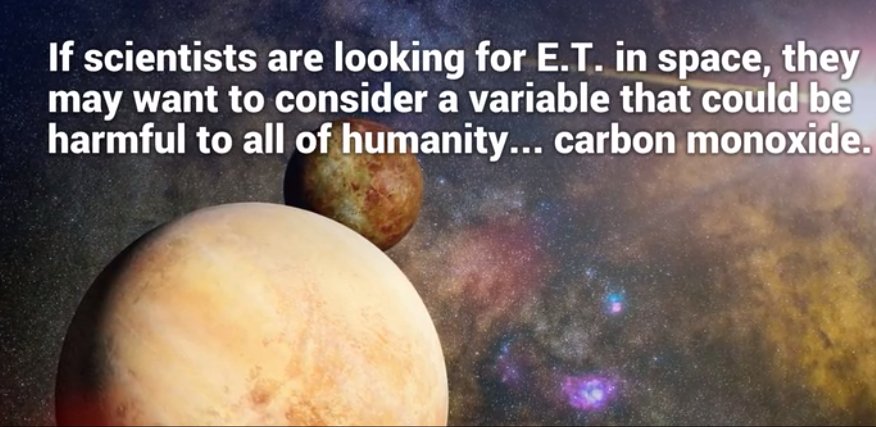Poisonous gas could be a precursor to alien life

If scientists are looking for E.T. in space, they may want to consider a variable that could be harmful to all of humanity — carbon monoxide.
A new study suggests that the poisonous gas, which prevents blood from carrying oxygen to vital parts of the body, could be a promising “biosignature” for extraterrestrial life and scientists should consider it, despite its potential for harm.
“That means we could expect high carbon monoxide abundances in the atmospheres of inhabited but oxygen-poor exoplanets orbiting stars like our own sun,” said Timothy Lyons, one of the study’s co-authors, in a statement. “This is a perfect example of our team’s mission to use the Earth’s past as a guide in the search for life elsewhere in the universe.”
REAL-LIFE ‘PLANET VULCAN’ FOUND 16 LIGHT-YEARS AWAY FROM EARTH
The study, published in the Astrophysical Journal, looked at two scenarios: the first looked at the history of the Earth, which had a very different chemical composition three billion years ago, with significantly more carbon monoxide in the atmosphere than there is today.
The model revealed that an ancient version of Earth could have supported as much as 100 parts per million of carbon monoxide, or several times greater than the parts-per-billion traces of the gas in the atmosphere today.
The second scenario may be even more favorable for carbon monoxide as a biosignature — red dwarfs, such as Proxima Centauri, the star nearest the Sun, could have exoplanets that are rich in oxygen and also contain an “abundance of carbon monoxide,” ranging from hundreds of parts-per-million to several percent.
“Given the different astrophysical context for these planets, we should not be surprised to find microbial biospheres promoting high levels of carbon monoxide,” the study’s lead author, Edward Schwieterman, said in the statement. “However, these would certainly not be good places for human or animal life as we know it on Earth.”
EARTH’S HISTORY COULD BE USED TO SPOT PLANT LIFE ON ALIEN WORLDS
In January, a similar study suggested exoplanets rich in oxygen may not necessarily contain extraterrestrial life, despite it being a key component for life on Earth.
One near-term area of hope for researchers looking for extraterrestrial life is the upcoming launch of the James Webb Space Telescope.
Scheduled to launch in March 2021, NASA says it will “study every phase in the history of our Universe, ranging from the first luminous glows after the Big Bang, to the formation of solar systems capable of supporting life on planets like Earth, to the evolution of our own Solar System.”



 Creators of mankind
Creators of mankind Description of “Tall white aliens”
Description of “Tall white aliens” Where they came from?
Where they came from? About hostile civilizations
About hostile civilizations The war for the Earth
The war for the Earth “Tall white aliens” about eternal life
“Tall white aliens” about eternal life Video: “Nordic aliens”
Video: “Nordic aliens” Aliens
Aliens Alien encounters
Alien encounters The aliens base
The aliens base UFO
UFO Technology UFO
Technology UFO Underground civilization
Underground civilization Ancient alien artifacts
Ancient alien artifacts Military and UFO
Military and UFO Mysteries and hypotheses
Mysteries and hypotheses Scientific facts
Scientific facts


















